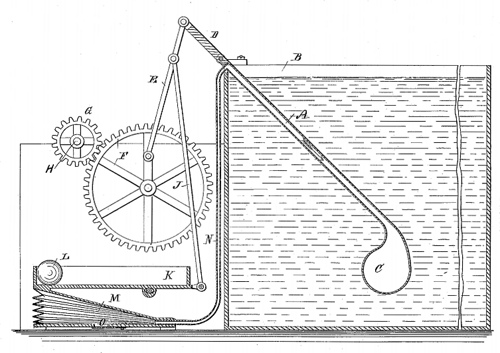
Patent examiners are busy people, and when this application arrived at the U.S. Patent Office in 1881 it seemed innocuous enough — the inventor, John Sutliff, had called it simply “motor.” So they issued the patent.
It is, in fact, a perpetual motion machine. When ball L rolls to the left, it depresses the bellows, which fills the submerged bulb, raising the lever and turning cogwheel F. This pivots the box, which sends the ball back to the right, drawing air into the bellows and submerging the bulb again, “and so on alternately.”
Thus the cogwheel turns forever, driving shaft H, which you can hook up to anything you like. A convenient source of endless free energy, and it’s been under our noses all this time.
